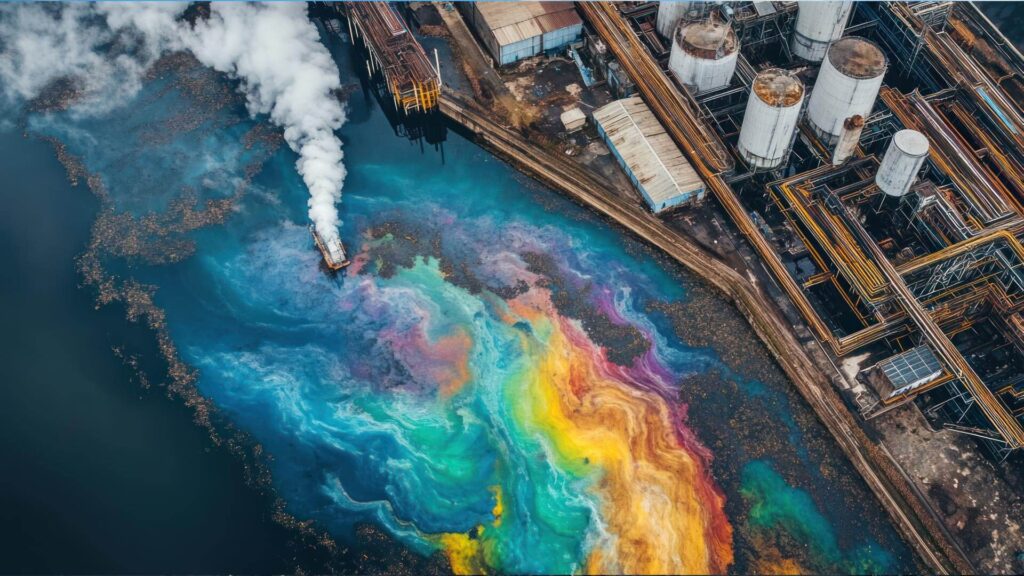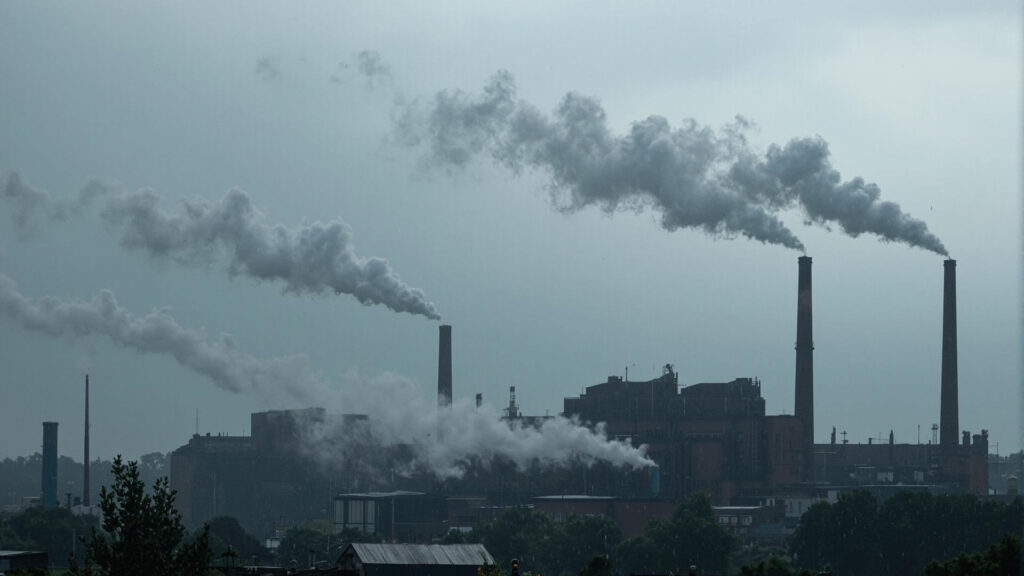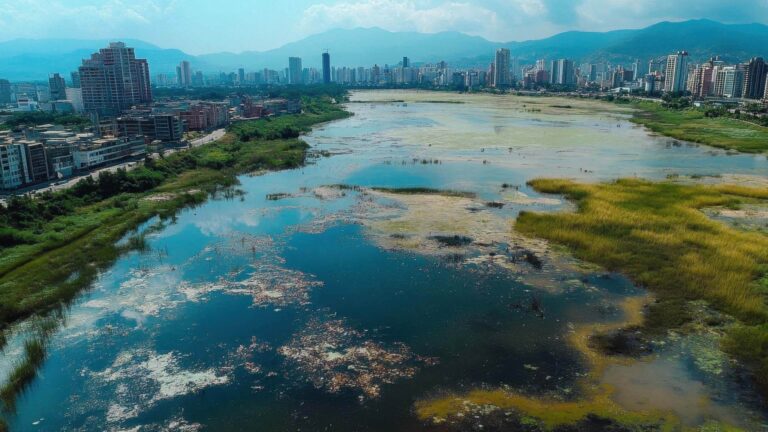Environmental remediation has become a critical solution in addressing contamination in soil, water, and air caused by industrial activities, spills, and other environmental hazards. As global concerns about pollution and its long-term effects grow, the importance of cleaning up contaminated sites has never been greater. By removing harmful pollutants and restoring natural resources, environmental remediation helps mitigate risks to both ecosystems and human populations.
The connection between environmental health and community well-being is undeniable. Contaminated environments often lead to serious health issues, including respiratory diseases, cancers, and waterborne illnesses, while also impacting local economies and property values. Effective remediation efforts can reverse these effects, ensuring safer, healthier communities.
Professional environmental remediation services provided by experienced environmental remediation companies play a vital role in these efforts. From assessing the severity of contamination to implementing advanced cleanup techniques, these companies ensure that affected areas are restored to safe and sustainable conditions. By safeguarding natural resources and addressing the root causes of pollution, environmental remediation protects not only the environment but also the health and safety of the communities that depend on it.
What is Environmental Remediation?

Environmental remediation is the process of removing pollutants and contaminants from soil, water, and air to restore the environment to safe and sustainable conditions. This critical effort addresses damage caused by industrial activities, spills, and improper waste disposal. The primary goals of environmental remediation are to mitigate risks to human health, protect ecosystems, and prevent further degradation of natural resources.
Common Contaminants and Their Risks to Community Health
Pollutants targeted in environmental remediation services include:
- Industrial Chemicals: Toxic substances from manufacturing processes can leach into soil and water, causing severe health issues such as cancer, respiratory problems, and organ damage.
- Heavy Metals: Lead, mercury, and arsenic are common contaminants that pose significant risks to neurological and developmental health, particularly in children.
- Oil Spills: Petroleum-based pollutants can devastate aquatic ecosystems and contaminate drinking water supplies, endangering both wildlife and human populations.
These contaminants harm health, reduce property values, limit economic growth, and increase the cost of long-term environmental management.
Key Methods in Environmental Remediation
Environmental remediation companies employ various methods to address contamination effectively, including:
- Physical Remediation:
- Techniques such as soil excavation, dredging, and air stripping physically remove contaminants from affected areas. These methods are often used for large-scale projects requiring immediate action.
- Chemical Remediation:
- Chemical processes, such as oxidation or neutralization, break down or render harmful substances inert. This approach is particularly effective for treating industrial chemicals and toxic spills.
- Biological Remediation (Bioremediation):
- Leveraging natural processes, such as the use of microorganisms or plants, to break down contaminants. Bioremediation is a sustainable option for addressing organic pollutants and improving long-term environmental health.
The Connection Between Environmental Contamination and Community Health

Contaminated environments have a direct and profound impact on public health, often leading to chronic illnesses and long-term community challenges. Pollutants in air, water, and soil can cause severe health issues, disrupt ecosystems, and harm economic stability. Environmental remediation is essential in addressing these challenges, ensuring healthier communities and safer environments.
How Contaminated Environments Affect Public Health
- Chronic Illnesses from Polluted Air and Water
- Exposure to airborne pollutants, such as particulate matter and toxic gases, is linked to respiratory diseases, cardiovascular conditions, and even cancer.
- Contaminated water sources, often tainted by industrial runoff, heavy metals, and pathogens, can lead to waterborne diseases, gastrointestinal issues, and neurological damage.
- Risks of Exposure to Toxins in Soil
- Polluted soil, particularly with heavy metals like lead and arsenic, poses risks to those living or working in affected areas.
- Direct exposure, such as through agriculture or construction, can lead to developmental issues, organ damage, and long-term health problems.
Real-World Health Crises Linked to Environmental Contamination

Numerous global and local examples highlight the devastating effects of environmental contamination on public health:
- Flint Water Crisis (USA): Lead contamination in drinking water led to widespread health issues, particularly affecting children with developmental delays and neurological damage.
- Bhopal Disaster (India): A gas leak from an industrial plant exposed thousands to toxic chemicals, resulting in respiratory illnesses and chronic health conditions.
- Love Canal (USA): The discovery of hazardous waste buried beneath a residential neighborhood caused a public health crisis, leading to cancer clusters and congenital disabilities.
These cases underscore the urgent need for environmental remediation services to address contamination and prevent similar crises.
The Role of Environmental Remediation in Reversing the Effects
Environmental remediation plays a vital role in mitigating the health impacts of contamination by:
- Removing Pollutants: Specialized environmental remediation companies deploy advanced technologies to extract toxins from air, water, and soil, restoring safe living conditions.
- Preventing Further Exposure: By neutralizing contaminants and containing hazardous materials, remediation efforts reduce the risk of long-term health effects.
- Rebuilding Communities: Successful remediation projects, supported by expert environmental remediation services, enable communities to recover, rebuild trust, and create healthier environments for future generations.
Through strategic interventions, environmental remediation cleans up contaminated sites and restores hope and safety to affected communities, proving its indispensable value in protecting public health.
How Environmental Remediation Enhances Community Safety
Environmental remediation is a critical tool for enhancing community safety by addressing contamination and preventing hazardous exposures. By removing toxic chemicals containing pollutants and implementing safety protocols, remediation efforts protect both residents and the environment from potential disasters. Below, we explore how environmental remediation services contribute to safer communities.
Mitigating Risks of Hazardous Exposure
- Removal of Toxic Chemicals
- Contaminants such as industrial chemicals, heavy metals, and petroleum-based pollutants pose serious risks to community health and safety.
- Environmental remediation effectively removes these toxins from residential areas, industrial zones, and natural environments, reducing exposure and long-term health risks.
- Containment of Pollutants
- When immediate removal is not feasible, environmental remediation services focus on containing pollutants to prevent further spread.
- Techniques such as capping contaminated soil or creating barriers in waterways help protect nearby ecosystems and communities from further harm.
- Prevention of Accidents and Disasters
- Contaminated sites can lead to significant environmental disasters, such as groundwater contamination, soil erosion, or chemical leaks.
- Proactive environmental remediation prevents these risks by stabilizing sites, neutralizing hazardous materials, and ensuring long-term safety for surrounding areas.
Role of Environmental Remediation Companies in Community Safety
Professional environmental remediation companies play a vital role in implementing effective safety protocols and delivering tailored solutions to meet specific community needs:
- Expert Assessment and Planning: Comprehensive site assessments identify risks and determine the best remediation approach for safe and efficient cleanup.
- Advanced Technologies: Companies utilize state-of-the-art equipment and methods, such as soil washing, chemical neutralization, and bioremediation, to ensure effective pollutant removal.
- Ongoing Monitoring and Maintenance: Post-remediation monitoring ensures that contamination levels remain within safe limits and prevents recurrence of environmental hazards
The Role of Environmental Remediation Services
Environmental remediation services are essential for addressing contamination and restoring the health of ecosystems and communities. Professional environmental remediation companies offer these services, which are tailored to meet the unique challenges of different sites, from industrial cleanup to emergency spill response. By leveraging advanced technologies and expertise, these services deliver effective solutions for even the most complex environmental issues.
Key Services Offered by Environmental Remediation Companies

- Site Assessment:
- Comprehensive evaluations to identify the type and extent of contamination.
- Use of soil, water, and air sampling to develop detailed remediation plans.
- Cleanup Planning:
- Development of tailored strategies based on site conditions and contamination types.
- Collaboration with stakeholders to ensure compliance with local and federal regulations.
- Execution of Remediation Projects:
- Implementation of cleanup techniques, such as soil excavation, water treatment, and air purification.
- Management of waste disposal and recycling to minimize environmental impact.
Addressing Specific Community Needs
Environmental remediation services are designed to tackle diverse contamination scenarios:
- Industrial Cleanup:
- Remediation of hazardous waste, chemical spills, and industrial by-products to protect workers and nearby residents.
- Residential Land Restoration:
- Cleanup of contaminated properties, such as former industrial sites or areas affected by leaks and spills, to make them safe for habitation and development.
- Emergency Spill Response:
- Rapid response to oil spills, chemical leaks, and other environmental emergencies to minimize damage and prevent long-term contamination.
Each service addresses the unique challenges posed by contaminated sites, ensuring community safety and ecological balance.
Advanced Technologies Used in Environmental Remediation Services
Professional environmental remediation companies utilize state-of-the-art technologies to improve efficiency and outcomes, including:
- Bioremediation:
- Use of microorganisms or plants to break down pollutants naturally, offering a sustainable and cost-effective cleanup method.
- In-Situ Chemical Treatments:
- Injection of chemical agents to neutralize contaminants directly within the soil or groundwater.
- Thermal Remediation:
- Application of heat to remove volatile contaminants from soil and water.
- Remote Monitoring Systems:
- Real-time tracking of contamination levels and remediation progress using advanced sensors and data analytics.
Challenges in Environmental Remediation
While environmental remediation is essential for addressing contamination and protecting communities, it comes with its share of challenges. Environmental remediation companies often face financial, logistical, and societal hurdles as they work to clean up polluted sites. Overcoming these challenges requires innovative solutions, collaboration, and community involvement to ensure successful outcomes.
Common Challenges in Environmental Remediation
- Financial and Logistical Barriers
- Cost of Remediation Projects:
Environmental remediation can be expensive, especially for large-scale sites requiring extensive cleanup efforts. Funding limitations often delay or hinder projects, particularly in underserved areas. - Logistical Complexity:
Coordinating environmental remediation services involves managing specialized equipment, transportation, and waste disposal, all of which require detailed planning and execution.
- Cost of Remediation Projects:
- Balancing Development with Environmental Preservation
- As communities grow, balancing the need for economic development with environmental preservation becomes a significant challenge. Remediation efforts must account for future land use, ensuring that redevelopment does not compromise ecosystem health or residents’ safety.
- Striking this balance often requires environmental remediation companies to collaborate with government agencies, developers, and environmental advocates to create sustainable solutions.
- Public Awareness and Community Involvement
- Many communities are unaware of the risks posed by environmental contamination or the benefits of remediation. This lack of awareness can lead to resistance, delays, or insufficient funding for projects.
- Encouraging public participation in environmental remediation services is crucial. Communities that understand the value of remediation efforts are more likely to support and advocate for necessary interventions.
Overcoming Challenges Through Collaboration and Innovation
- Innovative Solutions:
- Advanced technologies, such as bioremediation, in-situ chemical treatments, and remote monitoring, help reduce costs and improve efficiency in environmental remediation projects.
- Collaboration with Stakeholders:
- Involving local governments, businesses, and non-profits in planning and funding remediation efforts ensures better resource allocation and long-term success.
- Raising Public Awareness:
- Educational campaigns and community meetings can inform residents about the importance of environmental remediation services and encourage active participation.
- Transparent communication about project goals and timelines builds trust and fosters collaboration between communities and environmental remediation companies.
Conclusion
Environmental remediation plays a pivotal role in protecting community health and ensuring safety by addressing contamination in soil, water, and air. By removing pollutants and hazardous materials and restoring ecosystems, remediation efforts mitigate the risks posed by environmental contamination. From preventing chronic illnesses to safeguarding natural resources, the benefits of environmental remediation services extend beyond immediate cleanup, fostering long-term resilience and well-being in affected communities.
Engaging professional environmental remediation companies is essential for effectively tackling contamination challenges. These experts bring the knowledge, advanced technologies, and proven strategies needed to restore polluted sites safely and efficiently. Their work enhances public health and environmental safety and supports sustainable development by balancing remediation with future land use and ecological preservation.
Addressing environmental challenges is a shared responsibility. Governments, industry leaders, and local communities must collaborate to prioritize remediation efforts, fund projects, and advocate for cleaner, safer environments. With the commitment of all stakeholders, environmental remediation can continue to transform contaminated sites into thriving spaces, ensuring a healthier and safer future for everyone.




